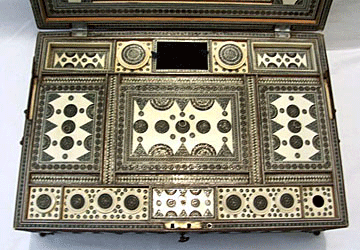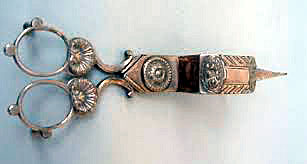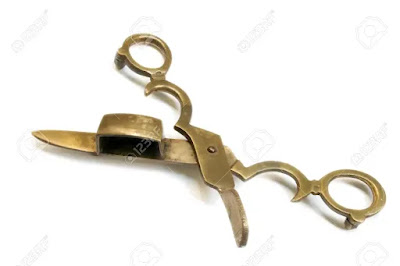 QUESTION: My family is German by descent. And being so, my grandfather assembled a collection of German beer steins. He left them to me. Rather then just have them sit on a shelf, I’d like to grow the collection. I don’t know anything about antique or even vintage steins and would like to know more before I purchase additional ones. How did steins originate? When were the first ones produced? And how can I tell if a stein has value?
QUESTION: My family is German by descent. And being so, my grandfather assembled a collection of German beer steins. He left them to me. Rather then just have them sit on a shelf, I’d like to grow the collection. I don’t know anything about antique or even vintage steins and would like to know more before I purchase additional ones. How did steins originate? When were the first ones produced? And how can I tell if a stein has value?
ANSWER: Those are all good questions. I’m glad to see that you’re interested in curating your grandfather’s collection rather then just packing the steins away or selling them off.
 Believe it or not, German beer steins have a very unlikely and surreal origin. Originally, the Germans produced beer steins to combat health issues that triggered the Bubonic Plague, also known as the Black Death which killed over 25 millions Europeans. Around the same time, hoards of flies began invading central Europe in the late 1400s. The fly invasion, combined with the plague, resulted in Germany passing sanitary laws that required all food and beverage containers to have lids to protect people from the insects.
Believe it or not, German beer steins have a very unlikely and surreal origin. Originally, the Germans produced beer steins to combat health issues that triggered the Bubonic Plague, also known as the Black Death which killed over 25 millions Europeans. Around the same time, hoards of flies began invading central Europe in the late 1400s. The fly invasion, combined with the plague, resulted in Germany passing sanitary laws that required all food and beverage containers to have lids to protect people from the insects.
Strict laws enforcing sanitation on the ingredients, transport, and quality of beer led to a great improvement in the taste of German beer. This made men value beer steins, thus wanting to own their own unique steins. The beer stein became a status symbol and display piece for German families each displaying its family crest.
Beer steins are a popular symbol for both Germany and beer. They come in all kinds of shapes, sizes, and materials, including earthenware, metal, pewter, wood, ivory, ceramic, porcelain, crystal, creamware, silver, and glass. Most have handles, a hinged lid and are decorated or hand-painted.
 The decorative elements of beer steins may represent traditional motifs, regalia, a coat of arms, or depict a person’s occupation. Some are embellished with three-dimensional artwork and touch on a theme. You may also find a collectible series of beer steins with themed artwork or antique steins with engraved dates to commemorate a special occasion.
The decorative elements of beer steins may represent traditional motifs, regalia, a coat of arms, or depict a person’s occupation. Some are embellished with three-dimensional artwork and touch on a theme. You may also find a collectible series of beer steins with themed artwork or antique steins with engraved dates to commemorate a special occasion.
The earliest antique German beer steins date to the 14th century, a time when earthenware was being improved, Germany was making new and improved brews, and Europe was ravaged with the bubonic plague.
From the 14th to the 17th centuries, German potters added salt, cobalt oxide blue, manganese oxide purple, and chocolate salt glaze to their steins. To go beyond simple decoration, they applied relief decorative shields, as well as historical, figurative, and Biblical scenes.
 Beer steins evolved as a result of the laws passed in several German principalities stating that covers had to be on all beverage and food containers. The laws, and others related to sanitary conditions, were in reaction to the fear that a recurrence of the bubonic plague, also called the Black Death, would be caused by several invasions of flies throughout Central Europe in the mid to late fifteenth century. Up until that time, most common folk drank beer from mugs made of porous earthenware or wood. The well-to-do and upper class drank from glass, pewter or silver vessels, called beakers or tankards.
Beer steins evolved as a result of the laws passed in several German principalities stating that covers had to be on all beverage and food containers. The laws, and others related to sanitary conditions, were in reaction to the fear that a recurrence of the bubonic plague, also called the Black Death, would be caused by several invasions of flies throughout Central Europe in the mid to late fifteenth century. Up until that time, most common folk drank beer from mugs made of porous earthenware or wood. The well-to-do and upper class drank from glass, pewter or silver vessels, called beakers or tankards.
Stein is a shortened version of the word steinzeug krug, which means stoneware, tankard, or jug in German. A stein was just one of a variety of beer drinking vessels. The word transformed into staene, meaning jug in Old English. The English version, stein, appeared in 1855. In common usage, stein referred to any beer vessel with a hinged lid and handle.
 Germans originally drank beer in mugs, but once the sanitary laws passed, these mugs came with a hinged lid with a thumblift. This ensured the mug could not only stay covered but could also be used to drink out of using only one hand using the thumblift.
Germans originally drank beer in mugs, but once the sanitary laws passed, these mugs came with a hinged lid with a thumblift. This ensured the mug could not only stay covered but could also be used to drink out of using only one hand using the thumblift.
Once the 16th century began, regulations regarding the quality and transportation of German beer resulted in better tasting beer and a variety of steins. The improved beer brought patrons to taverns, as well as the desire to own a personal stein.
By the mid-17th century, German beer and stoneware beer steins were in high demand. The elite members of the German society wanted elaborately decorated steins made of silver, pewter, or glass which were made in Bavaria, Koblenz and Koln.
 As personal steins became more popular, Germans wanted durable but inexpensive containers out of which to drink their clean beer. Stein makers began searching for better materials. Eventually, they created stoneware which proved to be a superior material that was chip-resistant and non-porous. It was the perfect component for a container that needed to meet sanitary conditions.
As personal steins became more popular, Germans wanted durable but inexpensive containers out of which to drink their clean beer. Stein makers began searching for better materials. Eventually, they created stoneware which proved to be a superior material that was chip-resistant and non-porous. It was the perfect component for a container that needed to meet sanitary conditions.
 Artisans began decorating tankards with scenes depicting towns throughout southern and Western Germany, like Heidelberg and Rothenburg. They also created artistic scenes that captured biblical, allegorical, and historical events.
Artisans began decorating tankards with scenes depicting towns throughout southern and Western Germany, like Heidelberg and Rothenburg. They also created artistic scenes that captured biblical, allegorical, and historical events.
By the late 18th century, the covered-container laws had run their course, but because the Germans had covered their beverages for three centuries, lids became an integral part of all steins.
The 18th-century trends continued to rise in popularity. The Bavarians had over 4000 breweries, and stoneware production increased into the late 1700s.
European porcelain started affecting stein-making in the 1720s, but these steins were expensive, so only wealthy Germans could afford them.
Just as steins improved, so did the beer. Most people considered beer to be an effective medicine. It was also safer to drink beer than water due to its sanitary production process.
 As wars and rebellions decreased the wealth and power of the aristocrats, so stein makers began looking to the middle class as their target market and made products to fit their lifestyles.
As wars and rebellions decreased the wealth and power of the aristocrats, so stein makers began looking to the middle class as their target market and made products to fit their lifestyles.
Cylindrical pewter steins became popular, and especially those with stamped or engraved folk art designs. The wealthy still preferred porcelain beer steins with Baroque decorations. But by the early 19th century, most Germans preferred pewter steins for everyday use.
By 1850, beer steins featured Renaissance motifs and relief decorations. They also had inlaid porcelain lids.
 Stoneware became popular once again after 1850. Makers used molds instead of the expensive and labor-intensive handbuilt process. Although more affordable and convenient, the molded tankards were no longer considered authentic German beer steins, as they were being mass-produced.
Stoneware became popular once again after 1850. Makers used molds instead of the expensive and labor-intensive handbuilt process. Although more affordable and convenient, the molded tankards were no longer considered authentic German beer steins, as they were being mass-produced.
Moisture-absorbing plaster molds helped porcelain stein producers make unique shapes and the lithophane scenes that are commonly found on the bottom of porcelain steins.
 Classically trained artists from the Mettlach factory introduced Renaissance motifs into their line of relief steins. They experimented with clay and glazes, which led to colorful mosaic and etched beer steins. People loved these beautiful creations so much that even laborers were willing to spend their week’s pay for one of them.
Classically trained artists from the Mettlach factory introduced Renaissance motifs into their line of relief steins. They experimented with clay and glazes, which led to colorful mosaic and etched beer steins. People loved these beautiful creations so much that even laborers were willing to spend their week’s pay for one of them.
The German beer steins produced from the mid-19th to early 20th century saw a resurgence in the popularity of stoneware steins decorated with Renaissance designs and motifs. These steins were made using clay from the Koln area, which has a distinctive white color. They were
decorated in the Renaissance style, often having relief decorations and colored them colored them using a gray salt glaze, topped with lids of inlaid porcelain
 The 20th century witnessed a decrease in Classical designs. Instead, people favored scenes depicting towns, social scenes, military commemorative, and occupational emblems. These kinds of motifs felt more common but personal to the individual. To meet the demands, pottery makers entered the scene and started making stoneware and glazed pottery beer steins.
The 20th century witnessed a decrease in Classical designs. Instead, people favored scenes depicting towns, social scenes, military commemorative, and occupational emblems. These kinds of motifs felt more common but personal to the individual. To meet the demands, pottery makers entered the scene and started making stoneware and glazed pottery beer steins.
 The newest art style, Art Nouveau, grew a small but dedicated audience in early 1900, but by 1910, the political and economic landscape turned the stein-making industry upside down. World War I demanded that the materials used to make beer steins be converted for ammunition production.
The newest art style, Art Nouveau, grew a small but dedicated audience in early 1900, but by 1910, the political and economic landscape turned the stein-making industry upside down. World War I demanded that the materials used to make beer steins be converted for ammunition production.
 The first molded steins were made in the region of Westerwald by Reinhold Hanke. Once molds were used and beer steins were being mass produced, the beautiful highly detailed carved relief work of the early steins was no longer unique.
The first molded steins were made in the region of Westerwald by Reinhold Hanke. Once molds were used and beer steins were being mass produced, the beautiful highly detailed carved relief work of the early steins was no longer unique.
Beer steins come in a range of volumes, from one ounce to eight gallons. Steins most commonly fall in the 16.9-ounce range. Steins can sell for under $50 or over $5,000, but many sell in the $100 to $500 range.
To read more articles on antiques, please visit the Antiques Articles section of my Web site. And to stay up to the minute on antiques and collectibles, please join the over 50,000 readers by following my free online magazine, #TheAntiquesAlmanac. Learn more about "Halloween Horrors" in the 2025 Fall Edition, online now. And to read daily posts about unique objects from the past and their histories, like the #Antiques and More Collection on Facebook.









































